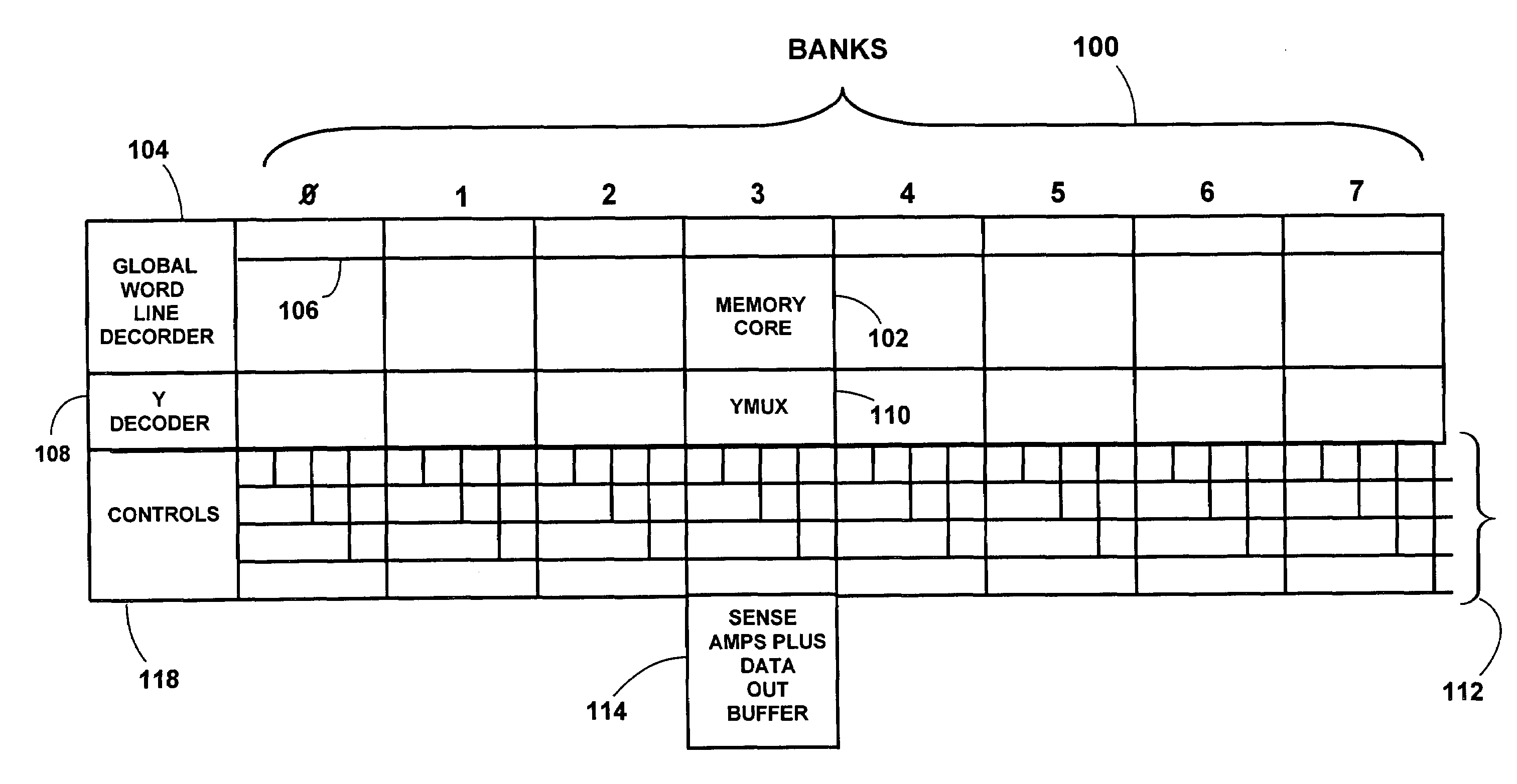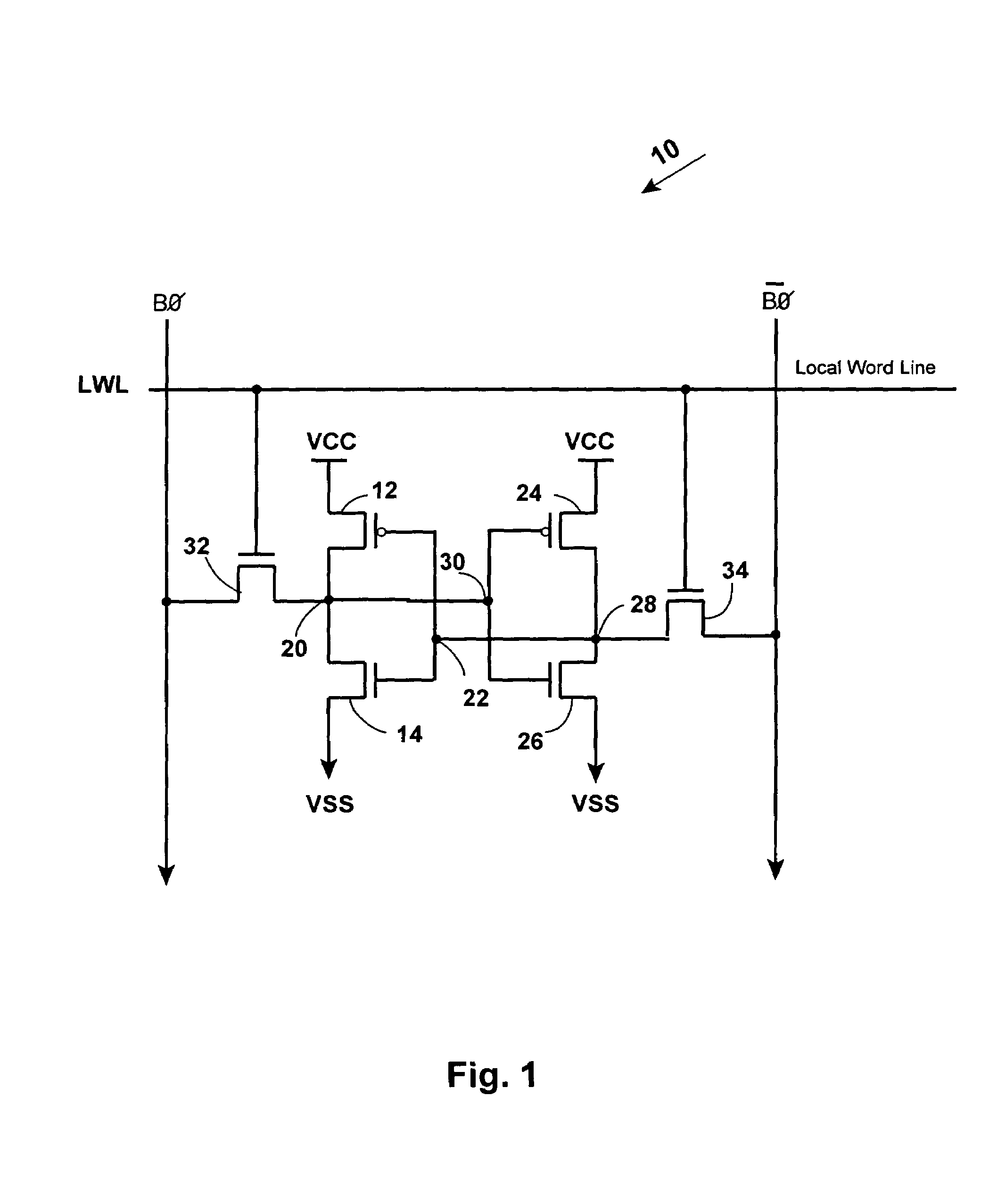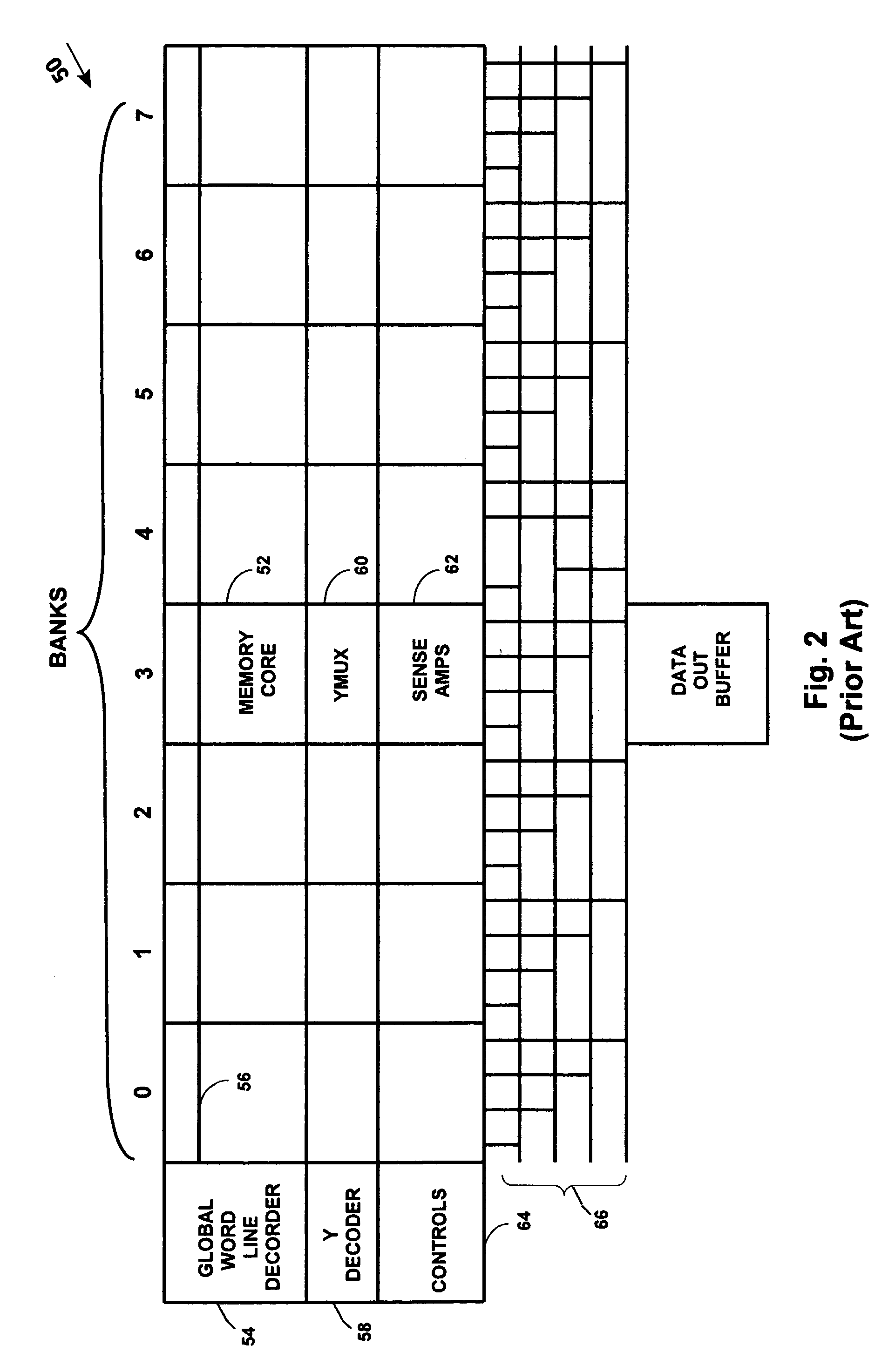SRAM power reduction
a technology of integrated circuit memory and power reduction, which is applied in the field of static random access integrated circuit memory (sram), can solve the problems of wasting power in the core and wasting power, and achieve the effect of reducing power consumption and minimizing the total capacitance of lines
- Summary
- Abstract
- Description
- Claims
- Application Information
AI Technical Summary
Benefits of technology
Problems solved by technology
Method used
Image
Examples
Embodiment Construction
[0040]Reference is now made in detail to one preferred embodiment of the invention, an example of which is illustrated in the accompanying drawings. While the invention is described in conjunction with the preferred embodiment, it will be understood that it is not intended to limit the invention to this embodiment. On the contrary, the invention is intended to cover alternatives, modifications and equivalents, which may be included within the spirit and scope of the invention as defined by the appended claims.
[0041]U.S. Pat. No. 6,657,880 entitled “SRAM BIT LINE ARCHITECTURE,” granted to John M. Callahan on Dec. 2, 2003 describes both horizontal and vertical twisting of signal lines in a SRAM and is hereby incorporated by reference.
[0042]FIG. 4 schematically illustrates a basic architecture of an exemplary SRAM 100, according to the present invention. As described below, the SRAM 100 has reduced power consumption because it maintains the 150 mv signal levels from bit lines on an int...
PUM
 Login to View More
Login to View More Abstract
Description
Claims
Application Information
 Login to View More
Login to View More - R&D
- Intellectual Property
- Life Sciences
- Materials
- Tech Scout
- Unparalleled Data Quality
- Higher Quality Content
- 60% Fewer Hallucinations
Browse by: Latest US Patents, China's latest patents, Technical Efficacy Thesaurus, Application Domain, Technology Topic, Popular Technical Reports.
© 2025 PatSnap. All rights reserved.Legal|Privacy policy|Modern Slavery Act Transparency Statement|Sitemap|About US| Contact US: help@patsnap.com



